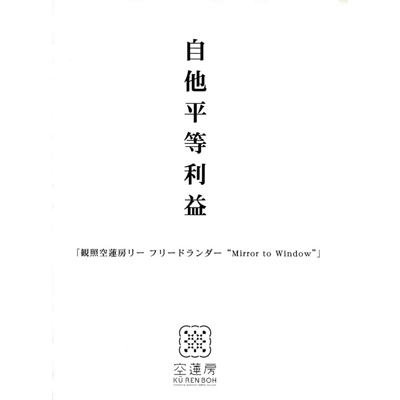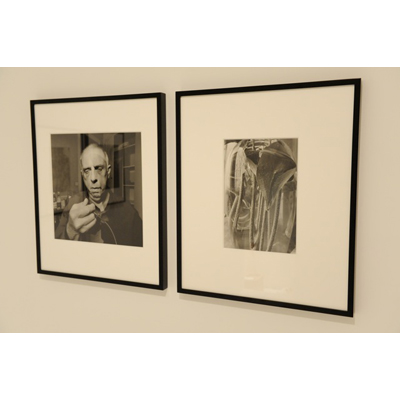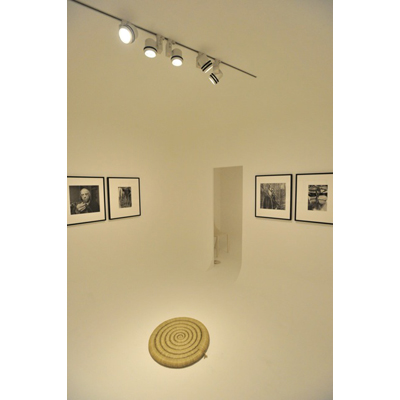works from ‘Stems and Self portraits’
2010 March 31st – June 25th
Lee Friedlander, who could be suitably called a “Camera Man,” took the photographs for his series Stems during a time when he suffered from serious knee pain. He has also created many other masterworks, but in this essay, I would like to focus on Stems, together with his Self-Portrait series. While he was still in pain, Friedlander, who is a buoyant and witty character, compared photography to “having lunch!” But beneath his warm and playful smile, I could also envisage him sincerely conversing with the photo he was taking. While in pain, he visualized the cosmos in a glass flower vase-the plants, air, water and light -as the glass refracted artificial light. What did he perceive as he stood before the vase? What did he feel from the water bubbles? What came into his mind via the light as he suffered in pain? He has been exhibiting his own self-portrait photos ever since the early part of his artistic career. The mechanism of a camera is quite akin to a kyosaku (“Zen stick”) that is used in Buddhist meditation. These two objects both allow one to reach the stage of selflessness, via knowing oneself and questioning the whereabouts of one’s existence. Should his own self-portrait photos in the Self-Portrait series be viewed as Friedlander himself? In his two series (Stems and Self-Portrait), each photo seems to manifest two polar opposites (that is, “the photographer” and “the subject” of the photo, and “life/existence” and “death/non-existence”) as identical existences. Does a photo act as a tool to convey one’s own existence? Friedlander’s photos not only reveal his own existence, but also guide viewers to give thought to their own existence. Though most photographers go through a tantalizing process where they are caught between what is a “real” image and what is a “false” image (one which this buoyant artist is unlikely to lapse into), Friedlander is a rare artist who is genuinely engrossed in his photographing desire. Nonetheless, beyond his genuine desire, his passage has certainly led him to his own state of nirvana. I cannot help feeling that he is a “camera Buddha” who has the Buddha’s compassion of the Other Power, rather than being an artist who reaches nirvana via his own self-power. This is because he is well aware that photos cannot be taken based on ideological ideas. He also knows that a photo cannot be viewed ideologically. His photos allow us to perceive an enlightened spiritual state, one that can open a window to the external world. This is made possible through his continuous resonance with his own self in the mirror, so that he may inquire into the true self. This subject of his pursuit not only concerns Friedlander, but also applies to our own selves. / Kurenboh
(cooperated with Fraenkel gallery)


















